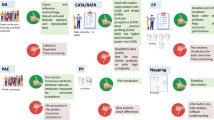Abstract
This paper discusses statistical methods and a workflow strategy for comparing performance across multiple sensory panels that participated in a proficiency test (also referred to as inter laboratory test). Performance comparison and analysis are based on a data set collected from 26 sensory panels carrying out profiling on the same set of candy samples. The candy samples were produced according to an experimental design using design factors, such as sugar, and acid level. Because of the exceptionally large amount of data and the availability of multiple statistical and graphical tools in the PanelCheck software, a workflow is proposed that guides the user through the data analysis process. This allows practitioners and non-statisticians to get an overview over panel performances in a rapid manner without the need to be familiar with details on the statistical methods. Visualisation of data analysis results plays an important role as this provides a time saving and efficient way of screening and investigating sensory panel performances. Most of the statistical methods used in this paper are available in the open source software PanelCheck, which may be downloaded and used for free.











Similar content being viewed by others
References
Brockhoff P, Skovgaard I (1994) Modelling individual differences between assessors in a sensory evaluation. Food Qual Prefer 5:215–224
Næs T (1990) Handling individual differences between assessors in sensory profiling. Food Qual Prefer 2:187–199
Dahl T, Tomic O, Wold JP, Næs T (2008) Some new tools for visualizing multi-way sensory data. Food Qual Prefer 19:103–113
Lê S, Pagès J, Husson F (2008) Methodology for the comparison of sensory profiles provided by several panels: application to a cross-cultural study. Food Qual Prefer 19:179–184
Tomic O, Nilsen A, Martens M, Næs T (2007) Visualization of sensory profiling data for performance monitoring. LWT-Food Sci Technol 40:262–269
Thompson M, Wood R (1993) The international harmonised protocol for the proficiency testing of (chemical) analytical laboratories. Pure Appl Chem 65:21–2123
McEwan JA (1999) Comparison of sensory panels: a ring trial. Food Qual Prefer 10:16–171
Hunter EA, McEwan JA (1998) Evaluation of an International Ring Trial for sensory profiling of hard cheese. Food Qual Prefer 9:343–354
Pagès J, Husson F (2001) Inter-laboratory comparison of sensory profiles methodology and results. Food Qual Prefer 12:297–309
PanelCheck software (2006) Nofima Mat, Ås, Norway. http://www.panelcheck.com
Næs T, Langsrud Ø (1988) Fixed or random assessors in sensory profiling? Food Qual Prefer 9:145–152
Tucker LR (1964) The extension of factor analysis to three-dimensional matrices. In: Frederiksen N, Gulliksen H (eds) Contributions to mathematical psychology. Holt, Rinehart & Winston, New York
Tucker LR (1966) Some mathematical notes on three-mode factor analysis. Psychometrika 31:279–311
Næs T, Solheim R (1991) Detection and interpretation of variation within and between assessors in sensory profiling. J Sens Stud 6:159–177
Lea P, Rødbotten M, Næs T (1995) Measuring validity in sensory analysis. Food Qual Prefer 6:321–326
Acknowledgments
Thanks to Rikke Lazarotti at LEAF Denmark for production of wine gum samples and providing access to the sensory profiling data. We would like to thank the Research Council of Norway (project number 168152/110), The Foundation for Research Levy on Agricultural Products (Norway) and The Danish Food Industry Agency for project funding.
Author information
Authors and Affiliations
Corresponding author
Rights and permissions
About this article
Cite this article
Tomic, O., Luciano, G., Nilsen, A. et al. Analysing sensory panel performance in a proficiency test using the PanelCheck software. Eur Food Res Technol 230, 497–511 (2010). https://doi.org/10.1007/s00217-009-1185-y
Received:
Revised:
Accepted:
Published:
Issue Date:
DOI: https://doi.org/10.1007/s00217-009-1185-y




